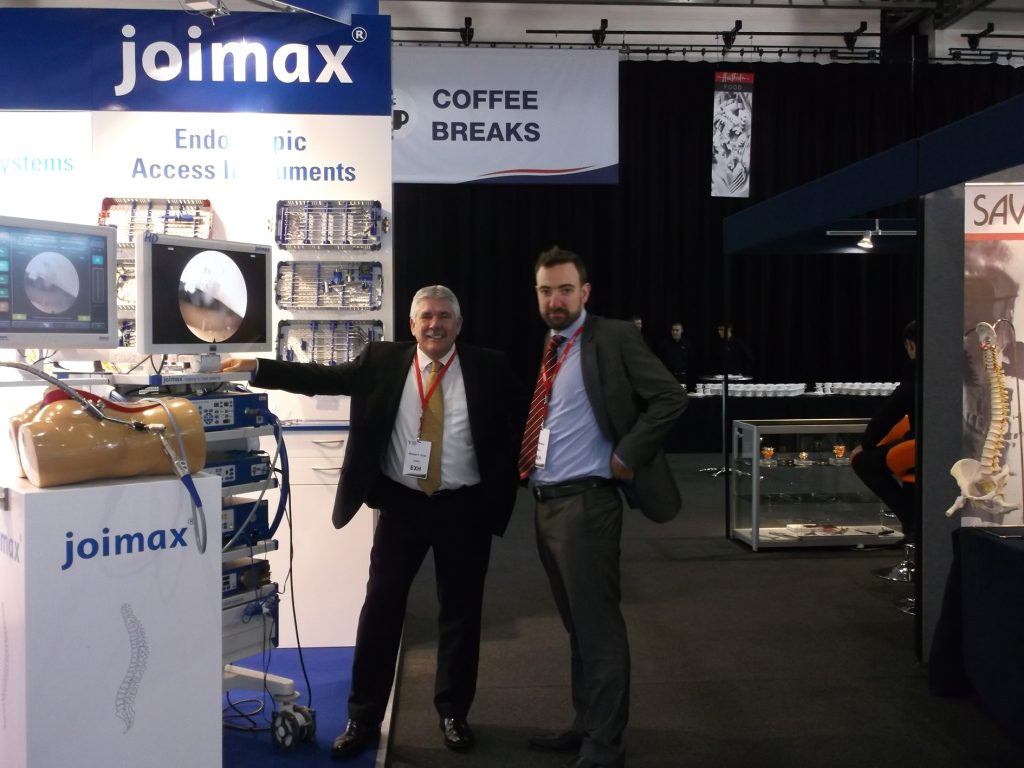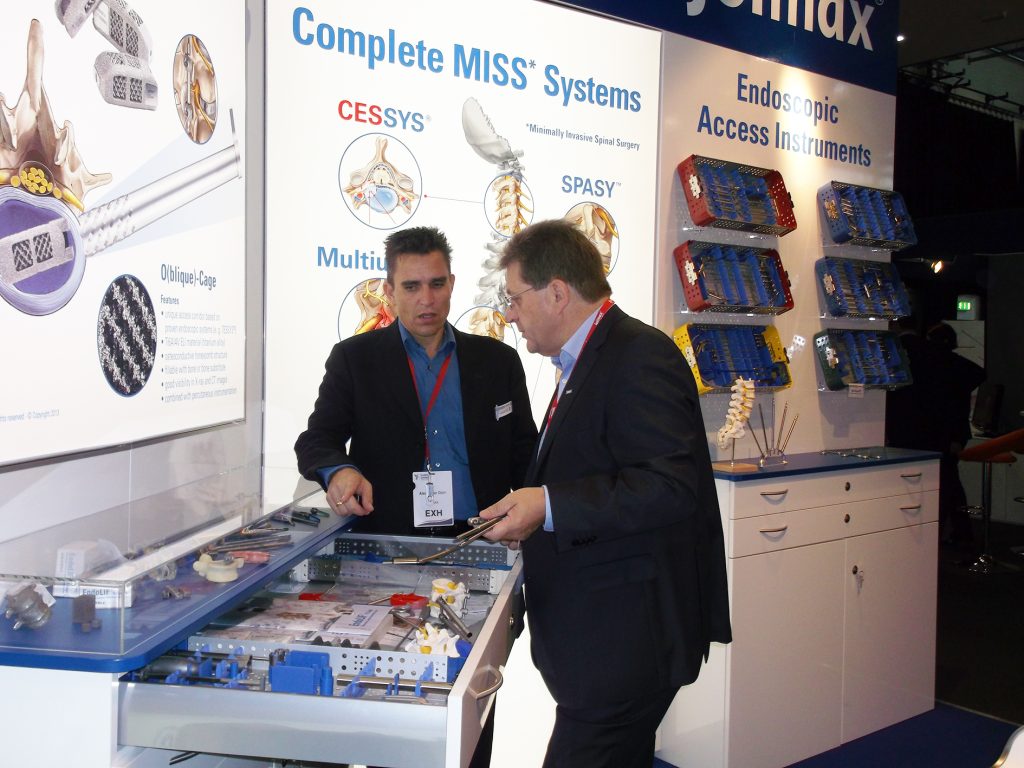Not yet FDA cleared
joimax® presents EndoLIF® as a world premiere at the Annual Meeting of DGNC
Karlsruhe, 24 May 2013. It has become a good tradition – but this time it will include a world premiere: As in previous years, joimax® will present a lunch symposium during the 64th Annual Meeting of the German Society of Neurosurgery DGNC to be held in Düsseldorf, Germany, on 27 May 2013. As a world premiere joimax® will introduce its novel EndoLIF® system for endoscopic stabilization of the lumbar spine. The joimax® Faculty Team had the chance to see this technology during its yearly User Meeting held at the Institute of Anatomy of the University of Mainz, Germany, in April. It will now be displayed to the broad expert audience of DGNC’s Annual Meeting.
Besides the endoscopic technology for the access to the disc compartment based on the well proven TESSYS® or iLESSYS® access method, the EndoLIF® system comprises an O-cage (oblique cage) and a screw and rod system for posterior percutaneous stabilization. The advantages of this procedure are obvious:
– Smooth, atraumatic access due to dilation of tissue
– Dura and nerves are protected by the working tubes
– Dorsal bone structures are generally not affected
– O-Cage with osteo-conductive surface providing the optimum substrate for cell growth
– Stabilization via screw and rod system for percutaneous i.e. minimally invasive positioning
Indications for this procedure are the degenerative disease of intervertebral discs, mechanical instabilities and spondylolisthesis grade I and II. CE approval is expected by summer 2013.
The joimax® lunch symposium will be chaired by Prof. Dr. Jürgen Kiwit (Berlin). Dr. Guntram Krzok (Friedrichroda) will present „TESSYS® and iLESSYS® for multiple decompression therapies“. Dr. Bernd Illerhaus (Recklinghausen) will then draw the line to the EndoLIF® technology with an outlook on future therapeutic options. „The EndoLIF® system is the next logical step in the evolution of endoscopic access technologies to the spinal canal for gentle and safe minimally invasive implantation of cages with subsequent percutaneous stabilization“, states Dr. Illerhaus with conviction.













